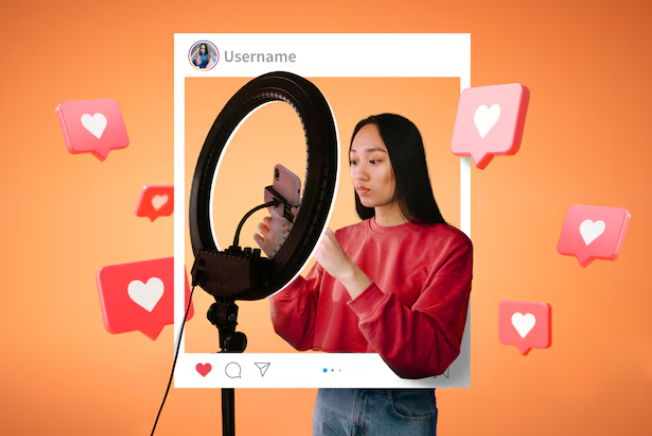How to develop an influencer marketing platform

Strong 8k brings an ultra-HD IPTV experience to your living room and your pocket.
Influencer marketing has emerged as an essential component in digital marketing strategies. It gives businesses a method to connect with their audience via trusted individuals in various fields. Making the right influencer marketing platforms could become a lucrative business opportunity by connecting brands and influencers to work together on campaigns that boost the engagement of their followers and increase conversion. However, establishing an effective platform is more than coordinating brands with influencers. It requires knowledge about the marketplace, users' needs, and the necessary technology for bringing the platform to life.
This blog will go over the essential steps to follow for influencer marketing app development. This includes defining the platform's features and target audience and choosing the appropriate technology stack. We'll also explore ways to attract brands and influencers, as well as important compliance and legal considerations. If you plan to create an online platform for the first time or improve your established one, the guide offers important information.
Key Features to Include in Your Influencer Marketing Platform
Creating the perfect influencer-based marketing system that can attract both brands and influencers requires more than linking them to collaborate. An effective platform must include features that increase accessibility and trust and simplify the management of campaigns. Here are some of the most important features to be added to your platform for influencer marketing.
User Profiles
A robust user profile is the basis of your website. Brands and influencers must be able to build detailed profiles that reflect their goals and requirements. For influencers, this could include information about their audience demographics, previous campaigns, the styles of their content engagement metrics, and the types of brands they usually deal with.
For brands, profiles must include information about their products and campaign objectives, their intended audience, and past marketing initiatives. Profiles that are thorough to ensure that both parties make informed choices when working together which will result in more successful relationships.
Campaign Management Tools
For companies looking to run successful influencer-based campaigns, an efficient tools for managing campaigns is vital. This tool should enable the brands to develop campaigns, establish goals, establish budgets, as well as select the Influencers to be selected from the pool. Influencers must also be able view the campaign's details as well as submit proposals and monitor the progress of campaigns. A central location for every campaign-related activity ensures that all parties are in sync throughout the entire process. It must also include timelines for the campaign, deliverables and payment plans to help keep everything in order.
Analytics and Reporting Tools
An influencer marketing platform must be able to provide influencers and brands with powerful analytical tools and reporting capabilities to monitor the effectiveness in their marketing campaigns. These tools should contain information on the most important metrics of performance (KPIs) like engagement rates, reach conversions, the return-on-investment (ROI). In the case of influencers, the tool must offer performance metrics on previous campaigns, allowing them to develop strategies to ensure future collaborations. Brands can utilize analytics to evaluate the effectiveness of their campaigns as well as make informed decisions about future collaborations.
Secure Payment Gateway
Controlling payments is one of the most essential elements of an influencer marketing platform. A secure payment gateway must be integrated to ensure smooth transactions between influencers and brands. The feature should allow different payment methods like banking transfers PayPal as well as other electronic payment methods. A reliable system for payment will ensure that influencers receive prompt payment for their efforts and also gives companies the ability to monitor their expenditure on marketing campaigns featuring influencers.
Contract Management and Legal Documentation
To safeguard both influencers as well as brand owners, the system needs to include a feature to manage contracts that lets users create contracts, sign, and then store contracts electronically. The contracts can define deliverables, timelines, confidentiality clauses, compensation as well as other terms that are important to know. Automating the contract-making along with the signing procedure, you simplify the legal aspects of influencer marketing and ensure that all contracts are clear legal and binding.
Content Approval Workflow
For campaigns that are based on content, an approval function is crucial. Brands should be able look over, approve, or request changes to content that is created by influencers before it is published. It should also be simple to use, and allow for feedback to be given directly to the platform. It should allow for different media formats (images videos, images, blog posts etc. ) as well as influencers must be able submit content to be approved through a well-organized submission system.
Rating and Review System
The importance of trust is paramount in the field of influencer marketing, and an evaluation and rating system aids in building credibility. Following the completion of a campaign the influencers and brands must be capable of rating and reviewing each other on the basis of their results. High ratings and positive reviews will help users establish their credibility in their community, and is particularly essential for influencers that are just starting out or brands. This feature helps promote transparency, encourages good work, and allows users to make informed choices when choosing collaborators.
Development Steps for Building an Influencer Marketing Platform
Establishing an effective influencer marketing tool can be a challenging yet rewarding undertaking, which requires meticulous planning, efficient execution, and a keen eye for the smallest of details. These are the main actions to be taken when developing an influencer marketing platform that will effectively connect brands and influencers to ensure smooth collaboration and effective campaigns.
Define Your Business Model and Objectives
Before you start the process of developing an Influencer Marketing Platform it is essential to define the purpose and business model. It is essential to determine the primary benefits of your platform, and what distinguishes it from the rest. For example, is it seeking niche markets like fitness or beauty or are you focusing on broad categories of influencers? Furthermore, you have to determine how you can earn revenue. Are you charging brands, influencers or both? It is possible to choose commission-based models as well as subscription fees or even a freemium model. A clearly defined business model will determine the platform's design and functions.
Identify Core Features and Functionalities
The capabilities and features of your platform are what make it attractive and usable to influencers as well as brands. Your platform must allow comprehensive user profiles that include the history of previous advertisements, the metrics of audience and engagement metrics. Utilize search algorithms that match influencers to brands based on diverse criteria, such as the audience size, niche, or engagement. A tool for managing campaigns is essential for brands to establish and track their collaborations with influencers. Also, ensure that there is a smooth communication between influencers as well as brands, and an analytics dashboard that tracks the performance of your campaign and its ROI.
Choose the Right Technology Stack
It is the technology stack that forms the core that makes up your software platform. For front-end development, pick a framework such as React or Angular. Vue.js that allow users to design a flexible and fluid user interface. Backend development options like Node.js, Ruby on Rails or Django are the most popular options to build robust systems. A robust database configuration is essential to manage campaign data, user information, and analytics and SQL-based databases like MySQL or PostgreSQL as reliable options. Cloud hosting with services such as AWS and Google Cloud will help your platform to grow as the demand of users rises. Additionally, the use of secure payment systems like Stripe as well as PayPal is crucial for securing financial transactions.
Develop the User Interface (UI) and User Experience (UX)
A well-designed and intuitive UX/UI is essential to ensure users experience a smooth and enjoyable experience using your platform. The design should be focused on accessibility so that both brands and influencers are able to quickly access the features and tools they require. Think about an adaptive design that can adapt easily to mobile and desktop users, because influencers are likely to utilize the platform while on the move. A minimalist, clean layout with easy-to-use features will also assist in retaining users and increase their likelihood to come back. Flexible features, like the possibility of personalizing user profiles, will enhance user experience.
Implement Security and Compliance Measures
Because your platform is handling sensitive information about users, including the personal information of users and financial details, security should be top of the list. Install SSL encryption to safeguard the transmission of data between users and servers. The use of two-factor security (2FA) is suggested to protect user accounts from access by unauthorized users. Also, make sure that your platform is compliant with laws like those of the General Data Protection Regulation (GDPR) and the California Consumer Privacy Act (CCPA) to ensure privacy of users and avoid legal issues. Implementing these measures to protect your platform and ensure compliance will build trust with your customers and protect your platform from possible violations.
Test the Platform
Testing thoroughly is essential to ensure that your platform is functioning exactly as you want it to. Conduct functional tests to ensure that features such as profiles, messaging and tracking campaigns work without issue. Usability testing is essential to verify your platform's simple to use and easy for users. Testing for performance ensures that the platform is capable of handling the peaks in traffic, which is crucial as the number of users you have increases. In addition, security testing will aid in identifying vulnerabilities and fixing the issues prior to launching. Testing on a variety of devices and browsers will guarantee an identical user experience for everyone.
Launch and Gather Feedback
When the platform is designed and tested thoroughly the platform is ready to go live. In the beginning, you might think about a beta release to allow a restricted number of users to communicate using the application. This will give valuable feedback about how the system performs, its user interface and features. When you gather insights about early-adopters, you are able to make necessary adjustments and improvements to the platform prior to a complete launch. This is also crucial to gauge the level of interest from users and ensuring there aren't any problems or bugs that could be a problem before the platform is launched.
Post-Launch Maintenance and Updates
The work doesn't stop once the platform's launch. Regular maintenance and updates are crucial to ensure that the platform runs smoothly. Check the platform for any issues with performance or bugs that could be discovered. Keep up-to-date with the latest trends in the industry to launch new features that fulfill the demands of users. Regular updates are essential to improve security, repairing weaknesses, and introducing enhancements in response to feedback from users. Post-launch maintenance makes sure that the platform is pertinent and competes in the constantly evolving market of influencer marketing.
The Key Takeaway
In the end, creating and making money from your influencer marketing system requires an in-depth understanding of both demands of the market and the appropriate strategies to deliver the most value. By incorporating features essential to the business, such as sophisticated search capabilities, advanced campaign administration and secure payment options it is possible to develop an influencer marketing app that is able to meet the needs of brands and influencers.
To be sustainable, adopting efficient methods to monetize your business, including subscription models or commissions on campaign campaigns and advertising can create a steady stream of income. Furthermore, offering services that add value such as data analytics or affiliate marketing can boost your revenue.
The success of your platform depends on providing a seamless experience for users. This includes creating trust, ensuring clear communication, and offering valuable tools for enhancing collaboration between brands and influencers. If you focus on these factors your influencer marketing platform will flourish and become a vital instrument for influencers and businesses seeking to establish powerful collaborations.
Note: IndiBlogHub features both user-submitted and editorial content. We do not verify third-party contributions. Read our Disclaimer and Privacy Policyfor details.




